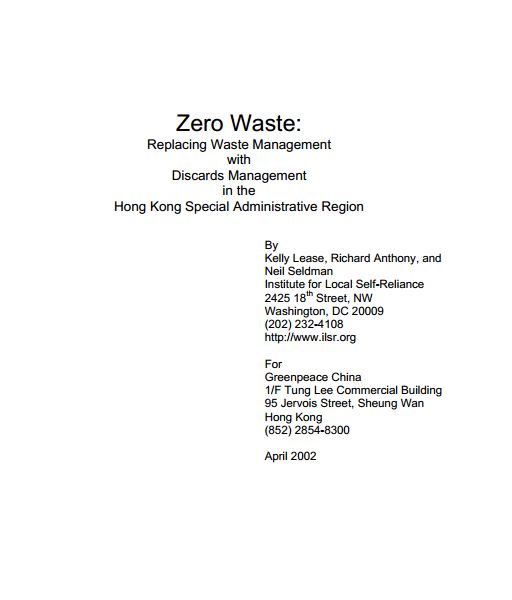by Neil Seldman Biocycle Magazine, January 2009
ZERO Waste is becoming the new conventional wisdom when it comes to handling municipal solid wastes. Public and private sector investors are staking claims to Zero Waste growth industries and doing well. And there is the related — and significant — benefit of green job creation. At the same time, however, there are lemons and pitfalls to avoid. In the past year, for example, it was announced that two successful Hollywood superstars were caught up in millions of dollars of bad investments in several recycled rubber enterprises.
Here are some factors to consider as you explore Zero Waste investment opportunities:
- Start with key sectors: Identify key sectors that need immediate attention; e.g., tires and rubber compounds, electronic scrap, construction and demolition (C&D) waste, organic materials.
- Focus on large waste volumes and quality products:Focus on companies that address large portions of the waste stream, and produce quality products that will be in demand. The following is a list of examples:
- Advanced rubber companies that produce high value virgin-substitute quality sold directly back to the tire, shoe or gasket manufacturer, NOT companies that produce crude low value crumb material suitable only for roadbeds and asphalt mixes. The key strategy in crumb rubber from old tires is the preprocessing, or deconstruction of the tire into its component parts, before final processing. This includes separating the different kinds of rubber that comprise a modern car or truck tire. There is a recycled rubber company that meets these requirements, and it is already accepted by the California Integrated Solid Waste Management Board. The company has determined that it will locate a plant in the state as California-based companies want to use recycled rubber to reduce costs and improve the quality of their products.
- Companies dismantling electronic scrap by hand that recover working parts and segregate alloys, NOT companies that shred mixed products to recover lower value metals.
- C&D companies that recover materials for reuse in construction and rehab, NOT those that dispose of the estimated 200 million tons of this material annually.
- Organic matter comprises 50 percent of the estimated 250 million tons of municipal solid waste (garbage) discarded annually by households and businesses and government offices. These materials are a perfect ingredients for high quality black gold — topsoil, amendments needed by agriculture and industry — worth $100/ton and a requirement for a sustainable food sector.
- Look for companies that are responding to new rules and regulations. Electronic scrap and old tires, for example, have been or will soon be banned from landfills and incinerators. In Pasadena, California, an ordinance came into effect in October 2008 containing new standards aimed at reducing C&D waste from going to the city’s landfill. Contractors must recycle at least 75 percent of this material. In San Jose, California, a contractor must put up a bond before taking down a building. The bond is reimbursed after proof of recycling is presented to the city.
- Track record is a must: Only consider companies with an operational history and established markets. For newly developing companies, make sure they have provided independent, objective financial, market, political and legal review.
- Purchase industrial land for recycling and composting industries. Referred to as Resource Recovery Parks, these zones can form the backbone of the infrastructure needed for sustainable resource management in the near and long-term future. California was a pioneer in developing Recycling Market Development Zones (RMDZ) throughout the state. The City of Los Angeles has such an RMDZ. Private developers can invest in properties and recruit companies that would pay rent as well as provide the zone developer with equity positions in each company recruited. Other innovative local governments include Hawaii County, Hawaii, and Alachua County, Florida. Hawaii County has developed an industrial site for use by companies that process green waste and FOGs (Fats, Oils and Greases) into new biological products. The County has issued an RFP for companies that would use the public facility. In Alachua County, 300 acres adjacent to the current County solid waste facility have been purchased for the development of an ecological industrial park. The Gainesville Chamber of Commerce is assisting the County in recruiting new companies to the county as well as helping existing recycling companies expand.
There are many companies out there that meet these few simple requirements for safe and profitable investment. Many companies are open to and often more than willing to partner with local nonprofit community development organizations. These joint ventures open up additional sources of project financing.
Neil Seldman is cofounder and president of the Institute for Local Self-Reliance. Seldman is a social enterprise technician. He assists in the start up and expansion of recycling enterprises for profit and non-profit entities. Seldman is an advisor to the City of Los Angeles Zero Waste Program, also known as the Solid Waste Integrated Resource Program (SWIRP).



